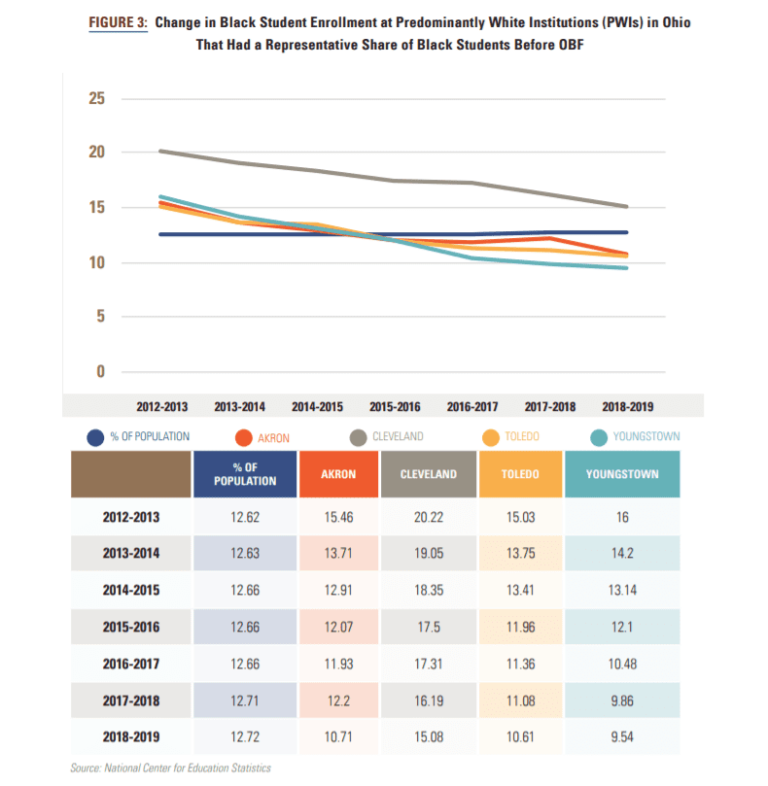How Higher Ed Funding Can Promote Positive Campus Racial Climates
Student activists have long fought for campuses and communities that are safe, diverse, and inclusive. Some institutions of higher education have responded to their call. At the same time, 26 states, as of June 2021, have introduced legislation or taken other steps to prohibit the teaching of critical race theory in K-12 schools or prevent teachers from meaningfully engaging their students on race, racism, and how young people can pursue justice. These actions, which happened in the wake of the incredible protests and mobilization for racial justice of the past year, underscore the need for higher education to affirm its role in creating a more just world.
Institutions must start by ensuring that all students, especially those from communities that remain underserved, can access the educational and economic opportunities that only higher education can provide. Funding formulas, such as those used in outcomes-based funding (OBF), are one way to prioritize fairness.
OBF makes a lot of sense in theory: The formulas incentivize institutions to improve by rewarding them for meeting specific goals. More than 30 states have implemented or are in the process of adopting policies that distribute funding to public colleges and universities based on student outcomes. But as research by The Education Trust shows, the funding formulas often harm rather than support the success of students of color and students from low-income backgrounds.
State funding disproportionately goes to institutions that already have more resources, like state flagships, which often under-enroll students from low-income backgrounds, Black students, and Latino students. Meanwhile, the institutions that enroll more of these students, such as community colleges, HBCUs and minority-serving institutions, and regional public colleges, receive much less under current OBF formulas, despite often needing more to support their underserved students, who’ve been shortchanged academically their entire lives. When states use metrics that fail to account for the inequities baked into higher education, their funding formulas punish institutions that serve more students of color and students from low-income backgrounds.
For example, Black student enrollment at four predominantly White institutions in Ohio actually decreased after the state implemented OBF in 2014. These institutions had representative shares of Black students before the policy went into place.

Other states have similar stories. In Illinois and Tennessee, OBF formulas are perpetuating decades-old disparities. But it doesn’t have to be that way. An OBF model that evaluates and funds institutions based on metrics that are founded on equity and provides institutions with enough resources to actually improve might serve students better and reduce disparities instead of reinforcing them. Those equity metrics should address both access and success and explicitly center students of color and students from low-income backgrounds. They should be designed and implemented with consideration for how inequities have limited students of color and students from low-income backgrounds, as well as the institutions they attend.
Beyond access and completion, how can states hold institutions accountable for ensuring success throughout a student’s college experience? Despite its promise of opportunity, higher education continues to fail far too many students of color, especially Black, Latino, Native, Pacific Islander, and underrepresented Asian American students, like Southeast Asian Americans.
A positive campus racial climate is critical to providing students of color their best opportunities to succeed in higher education. Campus environments should be safe, diverse, and inclusive of marginalized identities. Students of color must be treated fairly and feel a sense of belonging and respect in their academic and campus-based experiences and their interactions with faculty, staff, and peers.
That’s where OBF comes in. States can use OBF to reward institutions whose campuses affirm and embrace students of color and successfully educate all students on issues of race. States can identify baselines and incremental goals by using or establishing:
- Recognized surveys on campus climate
- Audits and assessments of faculty and staff diversity
- Targeted student supports
- Cultural and advocacy centers
Only four states currently require or allow institutions to adopt a measure of campus racial climate under OBF: Kansas, Pennsylvania, Rhode Island, and Tennessee. And, many of the actions institutions have taken in response to recent racial injustices are symbolic or fall short on preparing all students to help build better campuses and a better world. OBF is far from perfect, but when designed and implemented with a commitment to equity, it can be another tool to dismantle racist barriers and expand opportunity for people who have been excluded for far too long.
